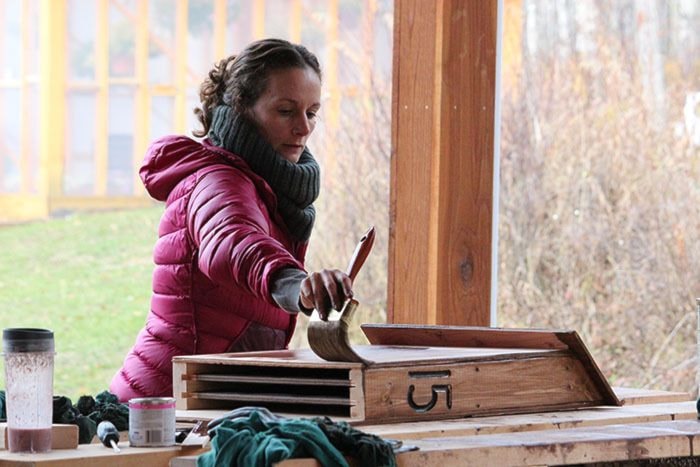A group in the Bulkley Valley has ramped up efforts to find out more about bats in the North by building bat habitats that will be scattered around the region.
“We don’t know too much about them. We don’t know where they go in winter, whether they go to the coast, if they go south to Mexico or if they go find some caves in Hazelton,” said Mel Coulson, director with the Bulkley Valley Naturalists.
“They have to go somewhere it doesn’t freeze but we just don’t know where they go.”
Last weekend, a dozen people gathered at a property in Telkwa for the second-annual bat building workshop.
Participants built, sanded and painted 20 new habitats for bats to use between April and September.
The boxes include three nursery chambers that female bats often use when they give birth, and an open bottom that allows them to fly in and out.
People will count the number of bats before and after they have babies to keep track of their breeding success. They will also use the droppings to help identify them.
There are currently a few bat boxes in the Bulkley Valley, but the increased numbers will help with the annual bat count in the summer as well.
Coulson has two boxes on his property in Quick and said they have attracted more than 200 bats.
Katharine Staiger, an instructor at North West Community College, said Coulson’s roost is of particular interest.
“He has a high number and they’ve returned. I found another big bat roost on Babine Lake,” she said. “It’s harder to follow a population of 10 or 12 bats then those bigger populations.”
According to Staiger, there is growing concern in Western Canada about a disease called White-nose Syndrome, a fungal disease that affects bats’ noses, that has killed more than five million bats in North America.
The disease could wipe out entire colonies and since bats only give birth to one baby a year, it could take years to rebuild the population.
Though the disease hasn’t reached B.C. yet, Staiger hopes if they have a general understanding of the bats in the area, then they can figure out how the disease could affect populations in the North.
“Biologists are concerned about how little they know about the current status of bats, especially in the western provinces. We are trying to establish some baseline population figures,” said Staiger.
“The bat houses give us some visible evidence of bats and we can easily count them as well as determine their species from guano samples.”
The province has also set up a bat hotline at 1-855-9BC-BATS that residents can call to identify the types of bats that live in their area.
For more information, visit www.bcbats.ca.
